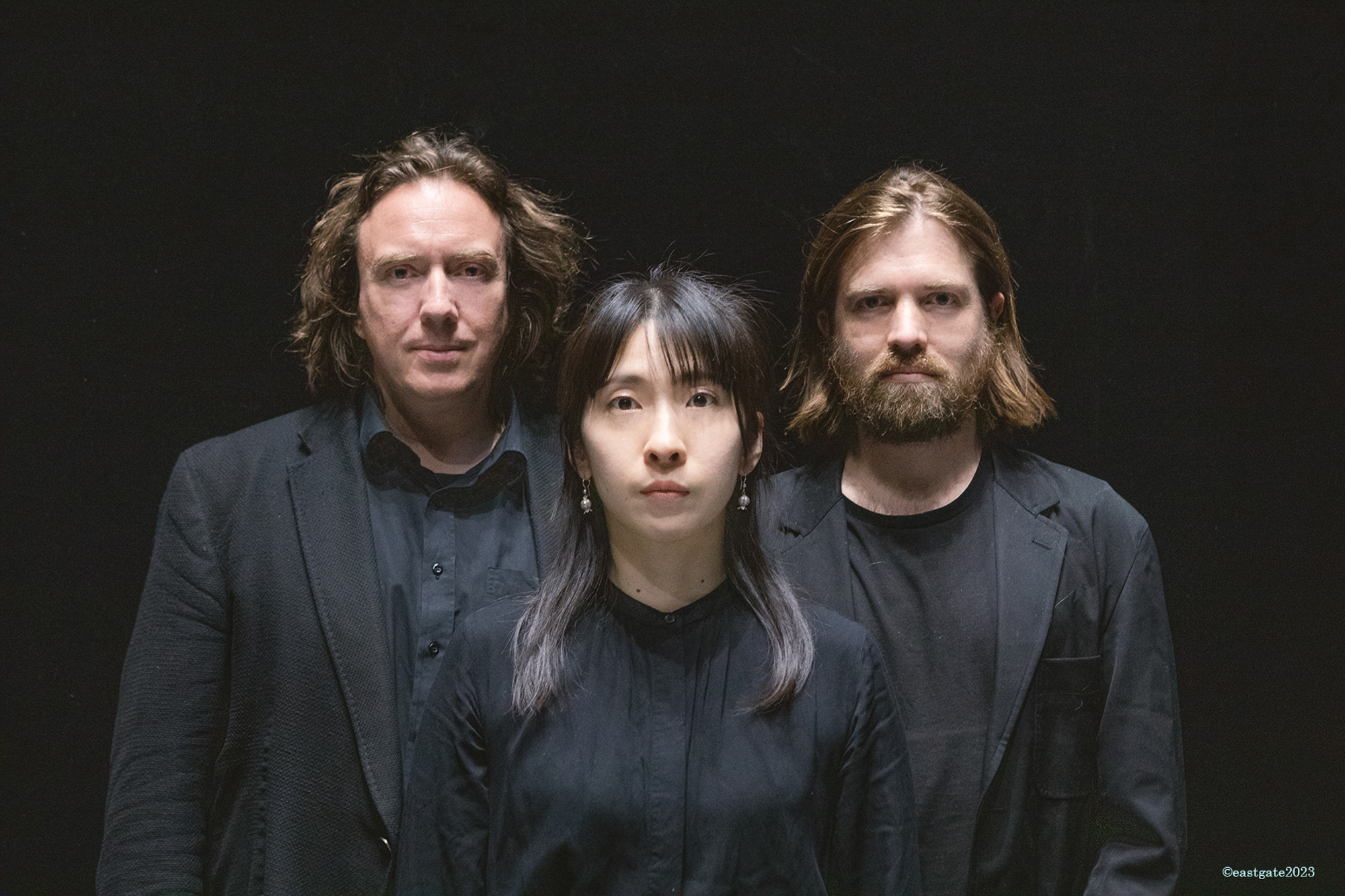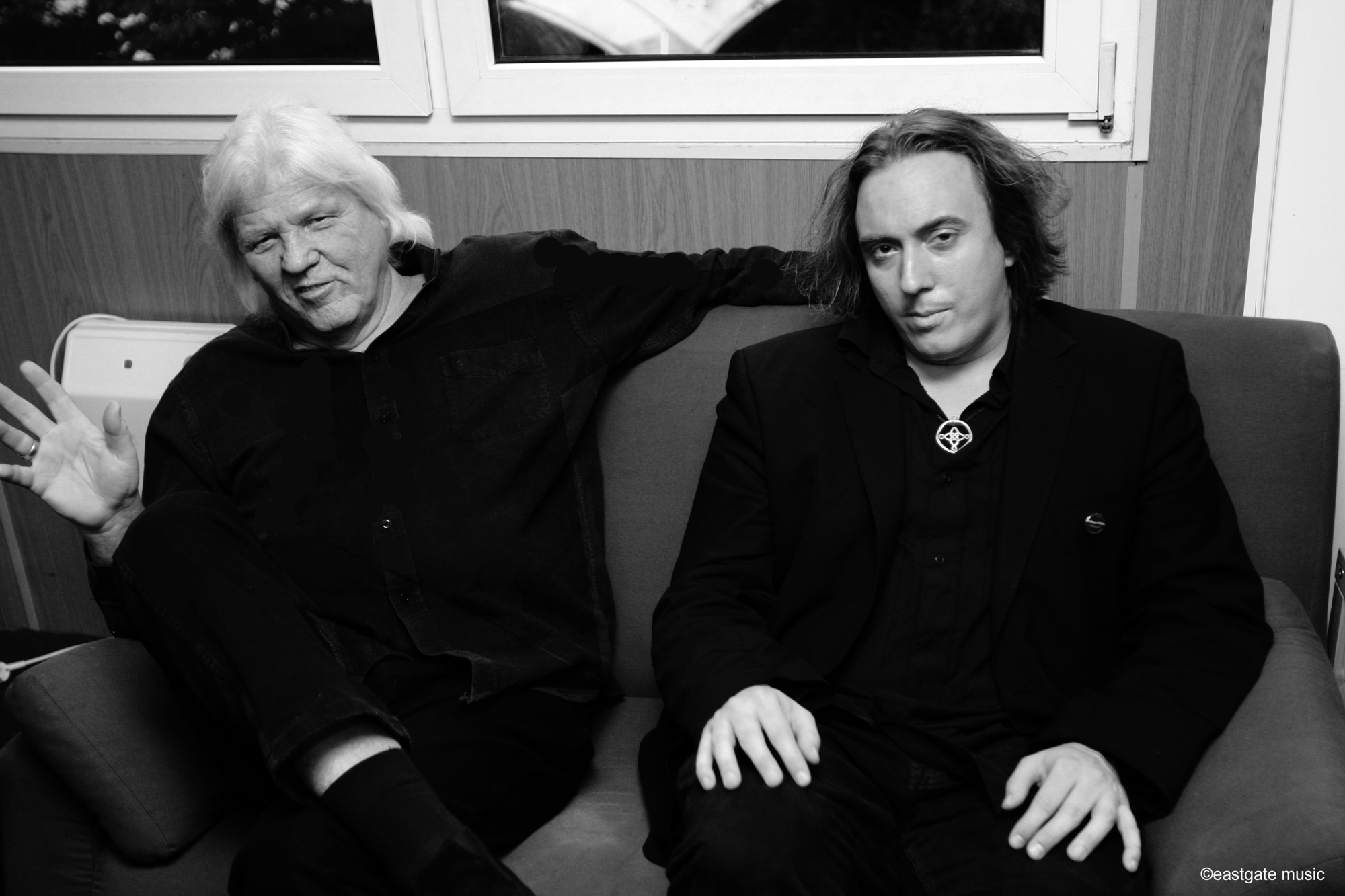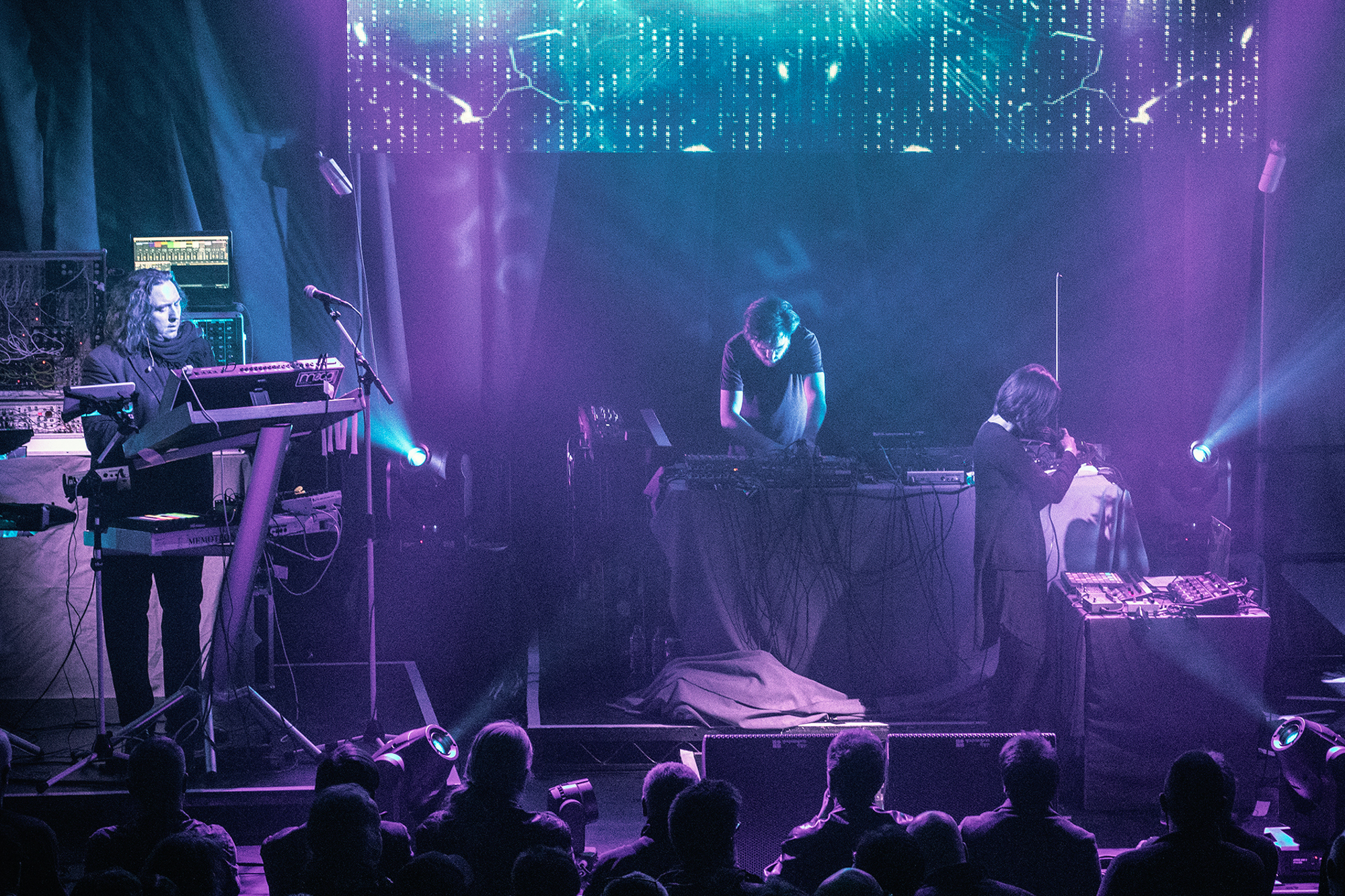Approaching its 50th anniversary, Tangerine Dream gambled on collapsing the universe. It was the summer of 2016, when the Netflix megahit Stranger Things debuted with a title theme that explicitly mimicked the electronic soundtrack music the iconic German band produced in the ’80s (including for 1981’s Strange Behavior, a film also about paranormal experiments in an idyllic midwestern small town). With a one-day break in their touring schedule, Thorsten Quaeschning and his colleagues hauled some Moogs and Rolands out of the truck, intent on “destroying the space-time continuum” with their own cover of the Stranger Things track. Quaeschning insists it was a “joke,” but it sounds more like a ritual. “And then it was uploaded from the tour bus,” he says in a thick German accent. “Two versions of it, one with a glitch because the internet wasn’t good.” It outperformed the original by Kyle Dixon and Michael Stein (of synth band Survive), and, mercifully, we’re all still here. Perhaps it was the glitch that saved us.
There isn’t another cultural institution remotely like Tangerine Dream. The band has remained largely anonymous, yet universally familiar, rising from Berlin’s late-’60s underground to a comfortable if unlikely mainstream presence commemorated in the Stranger Things tribute. Under the cantankerous guidance of founding member Edgar Froese, Tangerine Dream plowed a singular path, heard in the spontaneous experimentation of 1970’s Electronic Meditation and the screaming psychedelia of the 1971 single “Ultima Thule,” eventually finding its way into krautrock, prog rock, and the pioneering electronica of 1974’s Phaedra, before winding through cinematic digressions like the 1983 Tom Cruise blockbuster Risky Business, all while contributing genetic code to the New Age and EDM artists who devoured popular music in the ’90s. In 2023, any video gamer has heard Tangerine Dream during the pause menu in Grand Theft Auto V—the second-bestselling game of all time, after Minecraft. It’s a long, long way from what Julian Cope reverently describes in his book Krautrocksampler as the “psychic storm” Froese was conjuring to terrorize hipster-freaks in the band’s earliest days. The most extensive tour in its 56-year history brings Tangerine Dream to the Rickshaw Theatre in Vancouver on September 24.
“Everyone has their own Tangerine Dream because it’s maybe related to a moment when you listen to the music for the first time,” suggests Quaeschning, calling from a Holiday Inn somewhere between Austin, Texas, and Albuquerque, New Mexico. “You bundle it with a situation in your life and so on. If you just randomly pick out of the 150 or so albums, like Zeit [1972] and then Optical Race [1988], you won’t believe it’s the same band, but if you listen to the albums in between, there’s a guideline. It’s interesting—there is always the longing for futurism and finding something new, searching for the next chord or sound.”

The current Tangerine Dream tour of (left to right) Thorsten Quaeschning, Hoshiko Yamane, and Paul Frick. Photo by Melanie Reinisch.
Given the unfathomable size of the band’s output—again, that’s “150 or so albums”—Quaeschning and his collaborators Hoshiko Yamane and Paul Frick have sketched out 15 setlists based around 40 tracks for the North American leg of the tour, configured for each venue. “There’s nothing before ’74 because I’m not sure that it was meant to be recreated,” he says. “They never played a Zeit or an Atem concert in ’72–’73, because it was not meant to be reproduced note-for-note. So we start with Phaedra because there’s sequencers in it, which is kind of a fixed form until ’86 or ’87. And then we’re skipping all the years until 2005, just because of personal taste.”
Naturally, some of the more enduring soundtracks are shuffled into the mix. Tangerine Dream’s filmwork fascinates for a variety of reasons, not least of all because its glacial coolness was so conspicuous in an era ruled by orchestral bombast. Froese was evidently mercurial in his cinematic tastes. “I think Thief could be very important,” Quaeschning muses—the 1981 Michael Mann film starring James Caan. “To be honest, not every movie was a brilliant, glossy type of movie. I think Near Dark was very important to Edgar because the idea of a western done by a female director was kind of interesting. Or The Keep”—another effort by Mann, famously mangled by the studio—“with the Nazi zombies, this unbelievable thing.” Tangerine Dream was recently asked to re-record a cut from a very odd Canadian potboiler called The Park Is Mine, which was otherwise lost to copyright convolutions. Among Froese’s files, Quaeschning found the script for 1982’s Conan the Barbarian, “which Edgar refused to do.” Why? It sounds like the perfect fit! “Maybe just the wrong mood on the day,” he says with a chuckle. “Or exactly the right mood not to do it.”

The Master (Edgar Froese, left) and the student (Thorsten Quaeschning, right). Photo by Andreas Mueller.
Another key title is Sorcerer, the band’s first soundtrack and a firm favourite among longtime fans, composed in 1975 at the insistence of the film’s director, William Friedkin. In 2015, Edgar Froese died only weeks after performing Sorcerer in its entirety in Melbourne. Which brings us to the version of Tangerine Dream now touring the globe. Inside an outfit with, over the decades, a promiscuous membership policy, Quaeschning is an elder with some 20 years under his belt. He guided Tangerine Dream through post-Froese recordings such as 2022’s acclaimed Raum. “I lived together with Edgar for 12 years,” he says. “Everything I know about electronic music, I learned from Edgar himself. I studied classical music. I was in that time very much into rave, gothic rock, progressive rock, ambient, things like that, but programming step sequencers or patching modular systems I learned from, if you like, the Master himself.”
Quaeschning recalls the 17-hour workdays during that first “strange” summer at Froese’s Vienna home in 2003. “After two or three weeks he said, ‘Do you know that we have a big garden here and a pool?’ That’s like me. I really like being in the zone. The dream of my life is to make music without anything else. You have to serve music, letting it flow, and being in the studio the whole day. Because sometimes only some minutes of the day are good for the output, and if you are not there in the studio for those minutes, then the whole day is lost.”
Edgar Froese, he continues, had a vision of Tangerine Dream in a “quantum realm” that would survive his own death—“He was the type of guy that made plans for every type of situation,” Quaeschning says—and it follows that his young student with the unswerving devotion to craft and a gift for composition would eventually be put in charge. True to the entire Tangerine Dream gestalt, there’s a hint of the mystical, and when I put it to Quaeschning that he sounds, in the very best way, religious about the work, he responds with a soft “thank you.”
“Music is so important,” he continues. “Edgar and I had to do music. Even on holiday, synths in the hotel room, everywhere. After two days off there is a need to play music. So, there were plans. He always said the concept was so strong, and the ideas, and Tangerine Dream could survive all incarnations. It was not me who raised my hand and said ‘I want to do this.’ I probably wouldn’t have done this, but it’s just another quest, another task from the Master. And so I’m doing it.”









